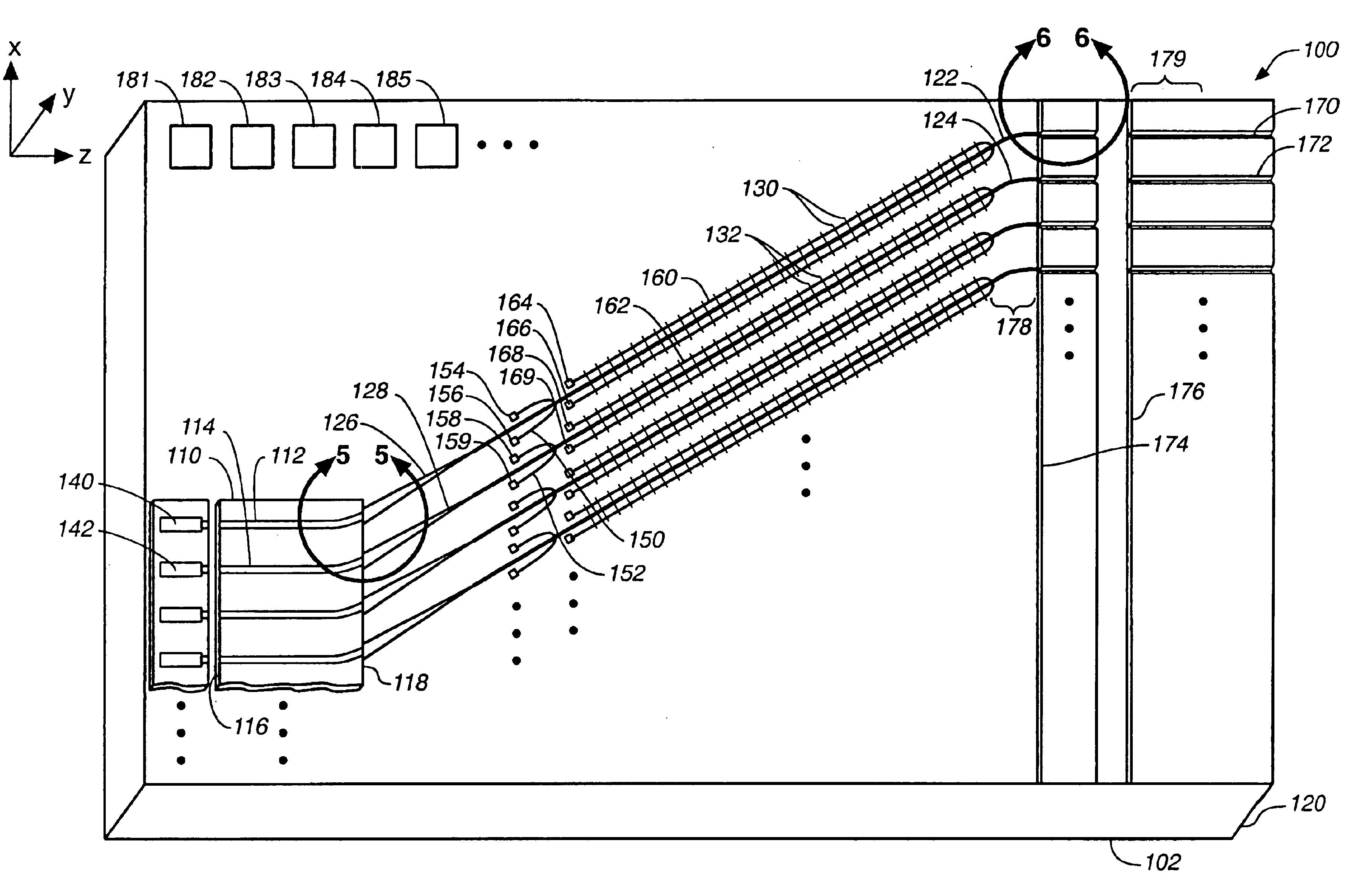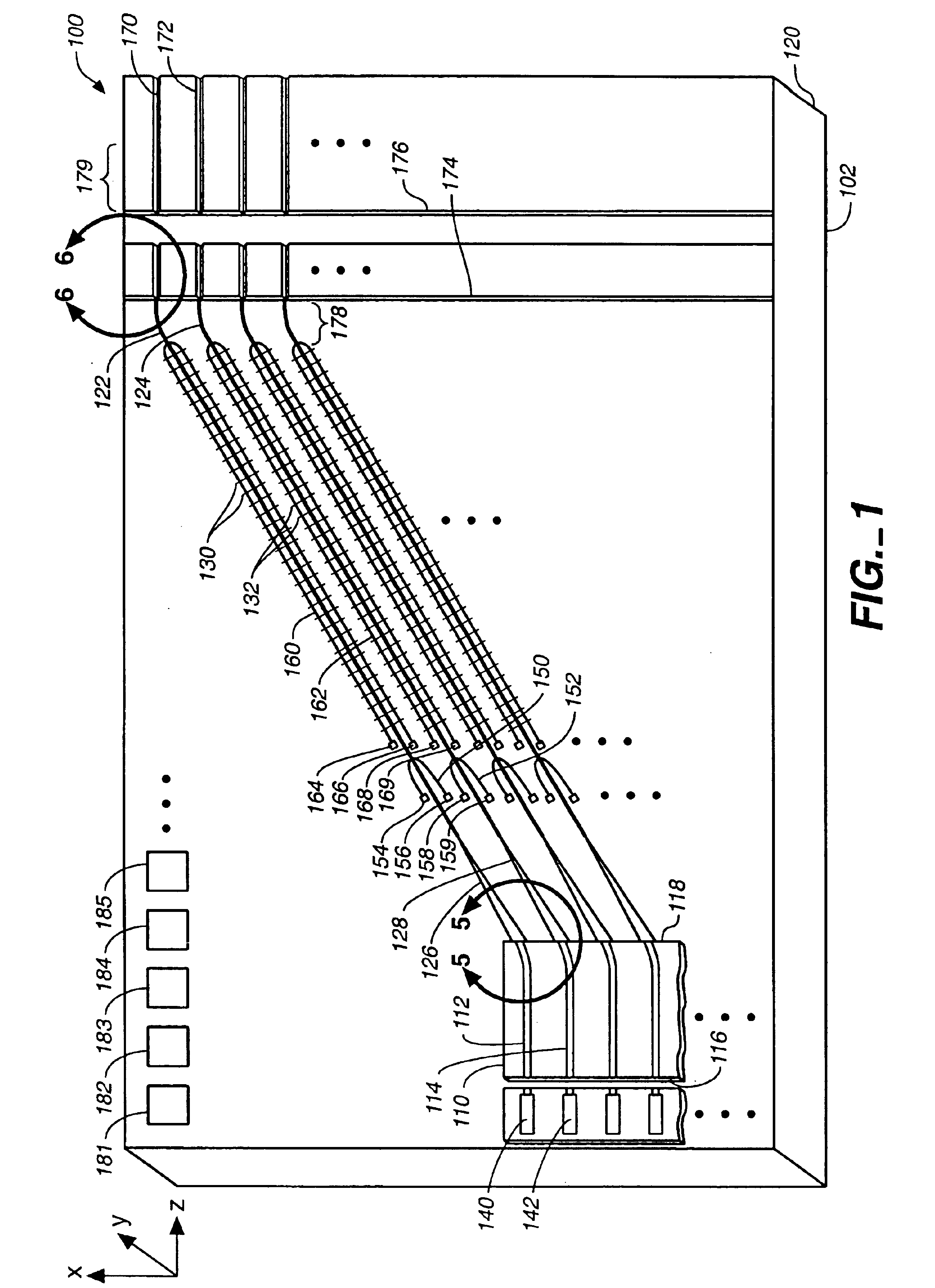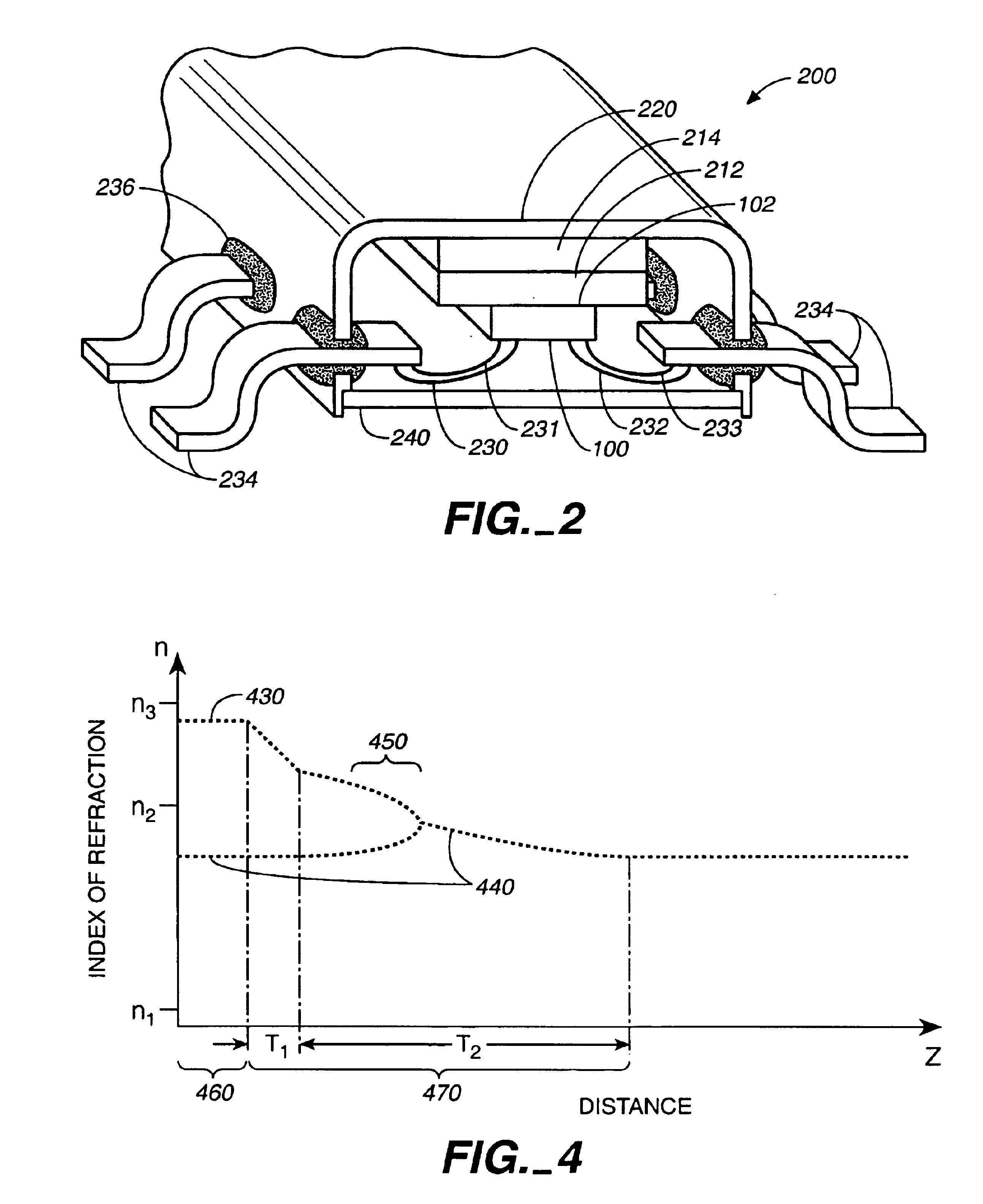Method of making channel-aligned resonator devices
a resonator device and channel-aligned technology, applied in the field of laser devices, can solve the problems of not being able to achieve high-quality production of a given frequency channel, and the current fabrication technique cannot meet the requirements of high-quality lasers
- Summary
- Abstract
- Description
- Claims
- Application Information
AI Technical Summary
Problems solved by technology
Method used
Image
Examples
embodiment
Laser Embodiment
[0044]FIG. 1 shows a preferred embodiment of the hybrid tunable laser chip 100. A semiconductor laser chip 110 is flip-chip bonded to the substrate chip 120 producing a hybrid of two integrated waveguide chips. The laser chip is preferably fabricated from InP so that it emits in the 1550 nm region or the 1310 nm region. The waveguides 112 and 114 provide optical amplification when excited by sufficient injection current, over an operating band of optical frequencies including a desired wavelength such as 1550 nm or 1310, 980, 860, 780, 630, or 500 nm, or another useful wavelength region. For a 1550 nm laser, a typical gain bandwidth would be about 50 nm (such as from 1520 to 1570 nm or from 1560 to 1610 nm), and would overlap a portion of the amplifying bandwidth of the Er-doped fiber amplifier either in the conventional band or one of the extended operating bands. The gain bandwidth may be smaller for lower injection current, or as large as 120 nm or more for high i...
PUM
 Login to View More
Login to View More Abstract
Description
Claims
Application Information
 Login to View More
Login to View More - R&D
- Intellectual Property
- Life Sciences
- Materials
- Tech Scout
- Unparalleled Data Quality
- Higher Quality Content
- 60% Fewer Hallucinations
Browse by: Latest US Patents, China's latest patents, Technical Efficacy Thesaurus, Application Domain, Technology Topic, Popular Technical Reports.
© 2025 PatSnap. All rights reserved.Legal|Privacy policy|Modern Slavery Act Transparency Statement|Sitemap|About US| Contact US: help@patsnap.com



